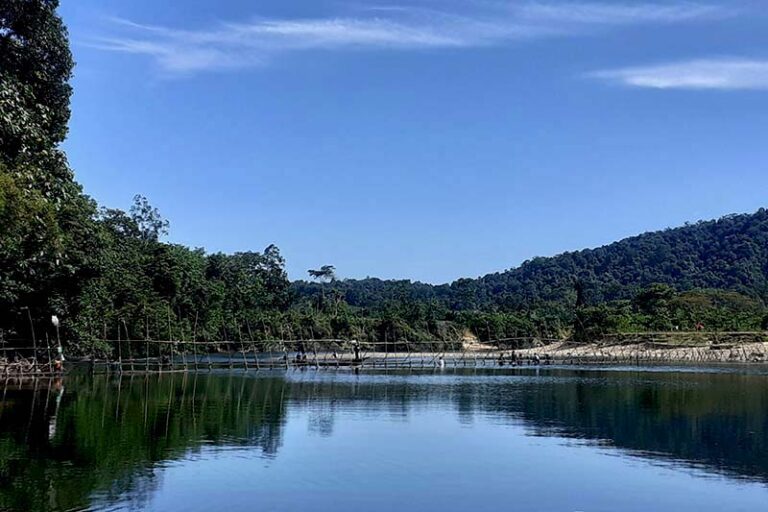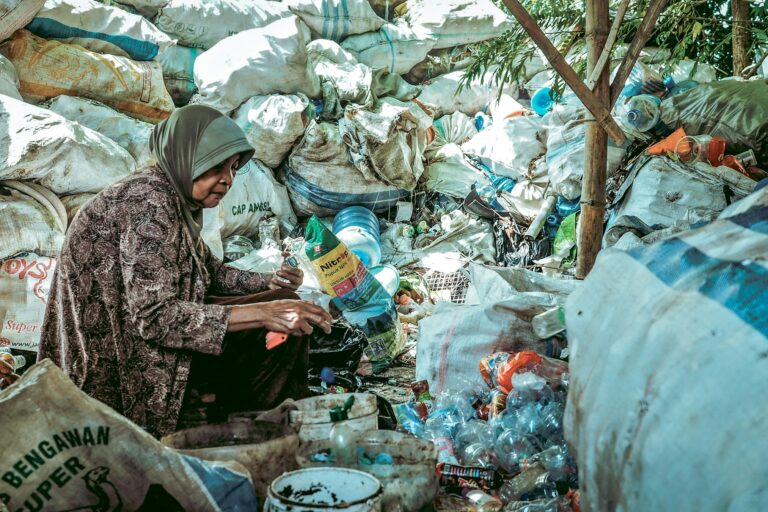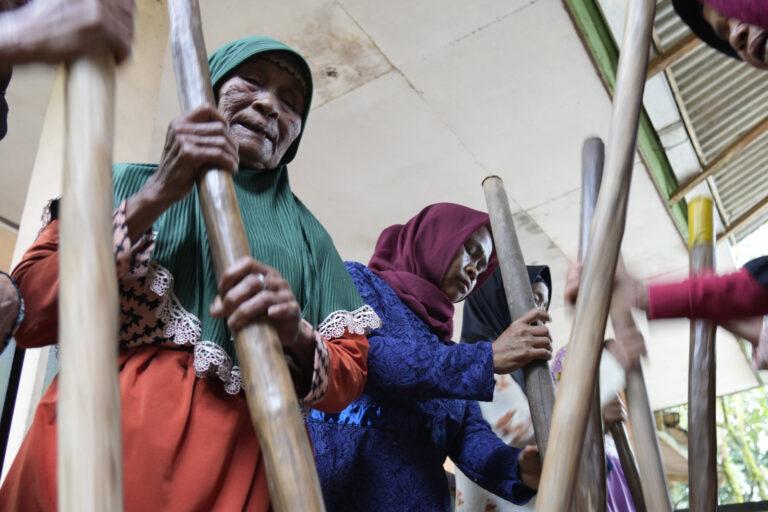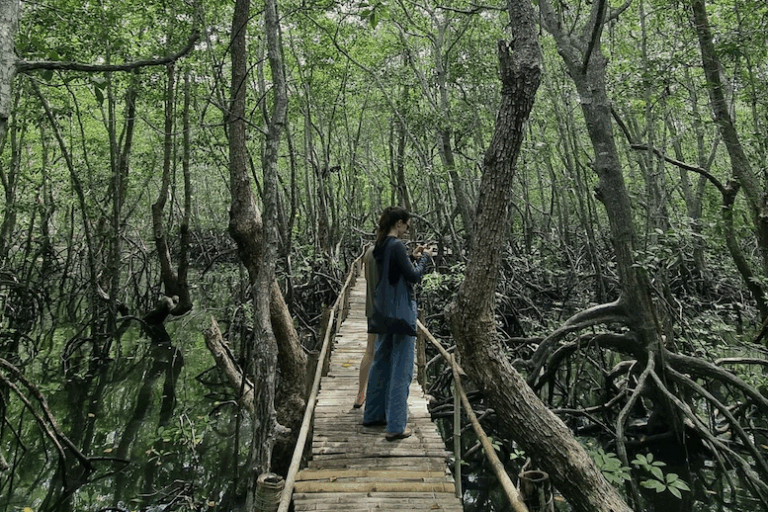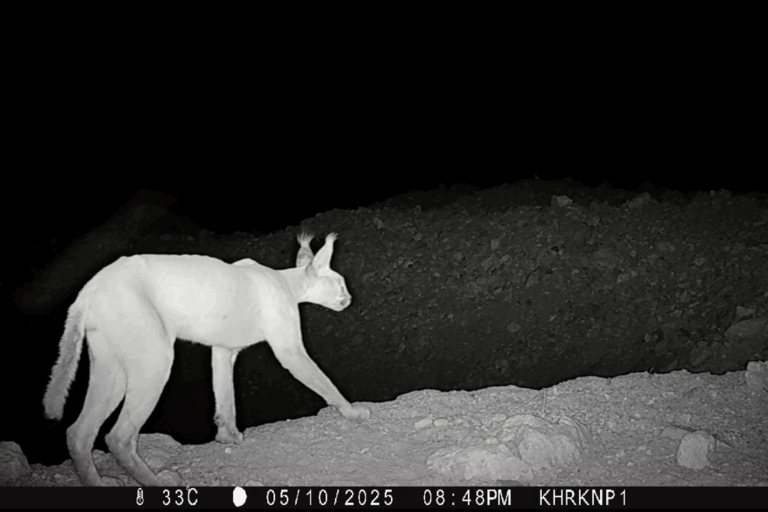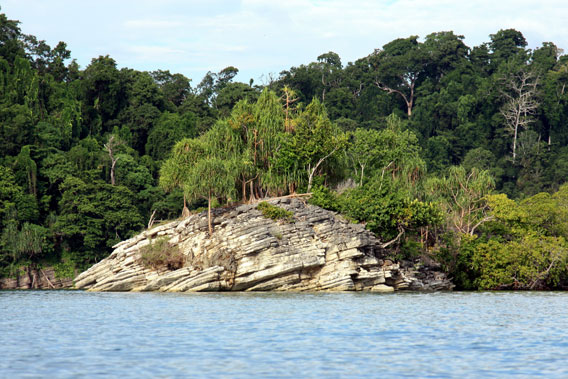
Pristine coastal vegetation: Misool island, Raja Ampat. Photo by: Dimtry Telnov, 2009.
Entomologist Dmitry Telnov hopes his new pet project will inspire and disseminate research about one of the world’s last unexplored biogeographical regions: Wallacea and New Guinea. Incredibly rich in biodiversity and still full of unknown species, the region, also known as the Indo-Australian transition, spans many of the tropical islands of the Pacific, including Indonesia’s Sulawesi, Komodo and Flores, as well as East Timor—the historically famous “spice islands” of the Moluccan Archipelago—the Solomon Islands, and, of course, New Guinea. Telnov has begun a new book series, entitled Biodiversity, Biogeography and Nature Conservation in Wallacea and New Guinea, that aims to compile and highlight new research in the region, focusing both on biology and conservation. The first volume, currently available, also includes the description of 150 new species.
“This territory is described as one of the most diverse, least explored and most endangered (both in cultural and natural aspects) regions on our planet, the ‘hottest’ biodiversity hotspot,” says Telnov in a mongabay.com interview, adding that, “generally, [the region] covers less than 1 percent of the world’s total land area but holds the world’s highest biological diversity both in terrestrial and marine ecosystems, in addition to an amazing diversity of human cultures and languages.”
 Book cover of Biodiversity, Biogeography and Nature Conservation in Wallacea and New Guinea. |
Despite its staggering wealth of species and cultures, much of the remote parts of region remain unexplored, while many places are undergoing drastic changes. Telnov says this means the time was a ripe time for a new research book series.
“After the famous Dutch-Indonesian magazine of 1950-60s ‘Nova Guinea’ was discontinued there has been no alternative centralized discussion board available for scientists and nature conservation specialists working in the Indo-Australian transition region. As for local scientists from Indonesia, Papua New Guinea, Timor and the Solomon Islands, they have very limited opportunities to present the results of their studies in peer-reviewed issues. My idea of the book is like for a ‘central organ’ of communication between the world’s most famous experts in various biological disciplines and our colleagues from the region. With the first volume I also aim to inspire colleagues from around the world to pursue research in the Indo-Australian transition zone.”
Given that the region is rich in natural resources—including timber, minerals, and fossil fuels—many of the islands have suffered large-scale environmental damage. Indonesia has one of the world’s highest deforestation rates due to the pulp and paper and palm oil industries, leading to less than half of the country remaining under forest cover. A study in 2008 found that nearly a quarter of Papua New Guinea’s forests were degraded or lost between 1972 and 2002, a number far higher than expected. East Timor’s forests have also been cut by a fourth from 1990-2010.
“The threats [to the region] are more or less equal to those of any tropical region,” Telnov says. “Global warming, rushed deforestation, booming population growth, the introduction of numerous non-autochthonous species, poverty in rural areas, the availability of high-value resources (timber, oil, gas, gold, nickel, copper), overhunting, oil palm plantations, collecting for animal breeders (especially—birds, reptiles and amphibians as well as large insects), lack of rangers, and lack of real control instruments (for example, many internationally protected species are being legally sold under other—i.e. non-protected—common names to Europe and USA). In addition, remoteness of the area, difficulty of controlling and monitoring the situation, local corruption, and unemployment are also important. Local inhabitants have to understand the value of their natural heritage, which could be done by increasing the level of education in this region”
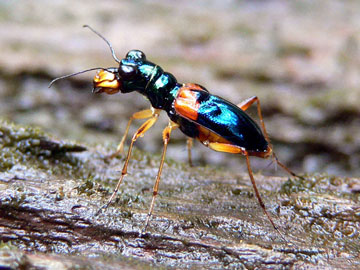 Tiger beetle (Therates sp.): Misool island, Raja Ampat. Photo by: Dimtry Telnov, 2009. |
Telnov has paid for the production of Volume 1 out of his own pocket, and is now raising funds for Volume 2 partially from payments of Volume 1.
“I find it important to demonstrate to the public, and also to the scientific community that absence of funding should not stop us from doing something important and necessary for nature conservation and scientific research,” he says. He hopes future volumes will incorporate more input from conservationists and homegrown scientists.
For inquiries and ordering information see bottom of the interview.
INTERVIEW WITH DMITRY TELNOV
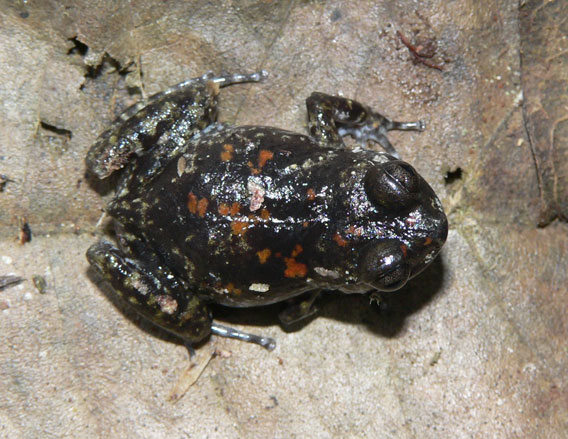
Unidentified frog, Fakfak mountains, New Guinea. Photo by: Dmitry Telnov, 2010.
Mongabay: Will you tell us about the Wallacea and New Guinea region?
Dmitry Telnov: The region of Wallace and New Guinea is an area of thousands of tiny to very large islands lying in the equatorial latitudes between the Asian and Australian mainland. This territory includes the eastern parts of Indonesia, East Timor, Papua New Guinea and the Solomon Islands. Generally, it covers less than 1 percent of the world’s total land area but holds the world’s highest biological diversity both in terrestrial and marine ecosystems, in addition to an amazing diversity of human cultures and languages.
Moreover, the territory of Wallacea (an area between Greater Sunda Islands and New Guinea) is the “birth place” for the biological discipline, biogeography. The famous British naturalist and evolutionist Alfred Russel Wallace (Wallacea was named after him) was so fascinated by the deep differences in the fauna of this territory compared to Greater Sunda Islands, that he produced the world’s first biogeographical monograph The Malay Archipelago after many years of traveling and observing nature in this part of the world.
Currently, this territory is described as one of the most diverse, least explored and most endangered (both in cultural and natural aspects) regions on our planet, the “hottest” biodiversity hotspot.
Mongabay: What makes the Wallacea and New Guinea unique in terms of biodiversity?
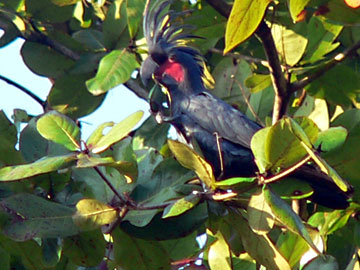 Palm cockatoo feeding on nuts: Misool island, Raja Ampat. Photo: Dmitry Telnov, 2009. |
Dmitry Telnov: It is hard to discuss such a simple and a difficult question in one! On the one hand, we know a lot about how continental drift and plate tectonics, climate, ecological conditions and geographical isolation develops very special and rich faunas. On other hand, we still are far from understanding the role of each of the above factors in single or selected groups of organisms. This is what I would call a “phenomenon” of the Indo-Australian transition zone: this territory is so diverse, in fact much more diverse than the adjacent continents, and the high number of endemic taxa is not a result of isolation in vast ocean, but occurs despite being close to major and biologically rich areas. There are a number of flora and fauna in this part of the globe, which did not arise not because of the isolation nor because of ecological conditions, but by some another currently unknown factors.
The main postulates on what makes the Indo-Australian transition zone so unique were postulated by Rreichholf in 2003:
- this area overlaps two main biogeographic realms, the oriental and the Australian;
- this area contains the largest complex of isolated islands worldwide;
- this area was affected by sea-level fluctuations during the Pleistocene which possibly acted as a “species-pump”;
- this area certainly received a number of plant and animal taxa from the American continents arriving occasionally across the Pacific Ocean during the Tertiary.
A very important addition is that the natural heritage of this region has been preserved longer from explorers and consumers by a very intolerable climate and unfriendly local tribes, whose role in the preservation of natural resources in the Indo-Australian transitional zone cannot be underestimated.
NEW BOOK
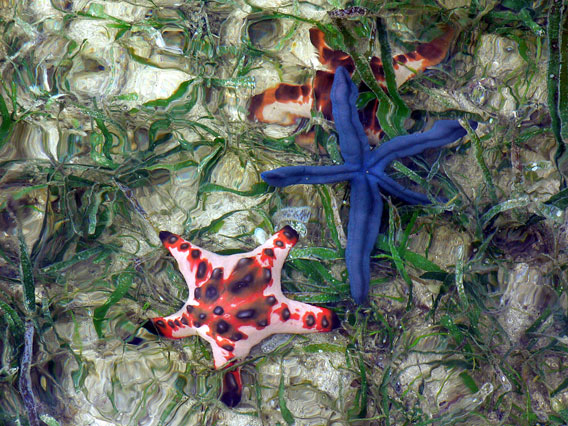
A scene from a coral reef off the island of Halmahera in Indonesia. Photo by: Dmitry Telnov, 2007.
Mongabay: The new book is described as an “attempt for starting a new era in research and nature conservation in the region of Indo-Australian transition.” How will this book help jump start more research and conservation efforts in the region?
Dmitry Telnov: Since Indonesia’s political and social situation, the main country of the region, was stabilized in 2000s, the number of scientific and nature conservation activities in this part of the globe are growing rapidly. After the famous Dutch-Indonesian magazine of 1950-60s “Nova Guinea” was discontinued there has been no alternative centralized discussion board available for scientists and nature conservation specialists working in the Indo-Australian transition region. As for local scientists from Indonesia, Papuan New Guinea, Timor and the Solomon Islands, they have very limited opportunities to present the results of their studies in peer-reviewed issues.
 Tarsius spectrum in Tangkoko National park, North Sulawesi. This National park is being slowly logged out by surrounded villagers. Photo by: Dimtry Telnov, 2007. |
My idea of the book is like for a “central organ” of communication between the world’s most famous experts in various biological disciplines and our colleagues from the region. With the first volume I also aim to inspire colleagues from around the world to pursue research in the Indo-Australian transition zone.
The second aspect of this activity is to “supply” the book (with volumes published on a regular basis) to scientific conferences devoted to different aspects of biology and geography in Wallacea and New Guinea. Conferences (also planned on a regular schedule about once every two or three years) are absolutely vital for mutual communication. We also hope to invite more colleagues from around the world to contribute to the forthcoming volumes of the book.
Increasing the amount of published information is crucial for the conservation of the region (if we have no data—there is no background to preserve anything). Any input to the book made by scientists (faunal, ecological, whatever) will finally have an output in proper nature conservation.
Mongabay: What can readers of the book expect to discover about the region?
Dmitry Telnov: The chapters vary depending on submissions. Readers of the first volume will be intrigued by a biogeographical review devoted to Philippine vertebrate fauna and confirming that the Philippines is a part of Wallacea. Readers may also enjoy a study on the modern and effective methodology of wildlife conservation based on Papuan traditions and beliefs. And, of course, new species publications form the largest part of the book and should be of interest to all readers. The book includes numerous black & white text illustrations, several maps and 92 A4 color plates.
What I originally imagined was a combination of scientific analysis (faunistic, biogeography, evolution and history of the fauna, taxonomy) with the nature conservation. So the “ordinary” reader should be attracted by the number of surprising new discoveries, which logically switches a reader’s attention to the reasons behind the need to preserve this biodiversity hotspot.
Mongabay: The book includes the descriptions of many new species in the region. How well-sampled is wildlife in Wallacea and New Guinea?
 Colorful but unknown caterpillar, Halmahera. Photo: Dmitry Telnov, 2007. |
Dmitry Telnov: As we know from biology, species diversity is ensured by the number of various habitats presented in a geographically limited area. But habitats are affected, for example, by climate and geographical factors. The Indo-Australian transition zone is world’s largest archipelago with several thousands of islands. New Guinea is Asia’s and Australia’s largest closed rainforest. New Guinea’s mountains are the highest in tropical Asia, and in Australia’s and Papua’s glaciers are the only ones in this part of the World, in addition the sea varies widely in depth. The conditions listed above are among the main factors causing extremely high species diversity of the Indo-Australian transitional zone.
Exactly 150 new species are described by contributors in Volume 1 of the book, a huge amount for a single issue. Much hard work by world-class specialists “behind the scenes” ensured these sensational results. One example is my own revision of the genus Macratria: 4 years of scientific activity with 19 museums around the world resulted in a revision, it takes a lot of time and energy!
As for me personally, I am actively working on the family of ant-like flower beetles (Anthicidae) for almost 20 years. My personal list of new discoveries (genera and species) includes over 400 newly described taxa, among them almost a third are from the Indo-Australian transition which includes both Wallacea and the Papuan region. Biological diversity of this region is fascinating and continues to surprise biologists of various disciplines for many years. The diversity of many groups of animals (sadly, my competence doesn’t allow me to comment on plants or fungi) in this area is surely very underestimated. Especially in terms of invertebrates, many large groups are almost completely uncovered by both historical and recent reviews. I am happy to say that my group —the Anthicidae—is among the most well-studied taxonomic groups of animals in this biodiversity hotspot, including not only taxonomy and faunistic, but also biogeography. For sure, Wallacea and New Guinea will continue to attract scientists. Results are now dependent on environmental conditions: deforestation is causing the extinction of enormous quantities of species who have never been by a scientist and will be lost prior to being described – a sad but true fact.
PERILS AND POSITIVES IN THE REGION
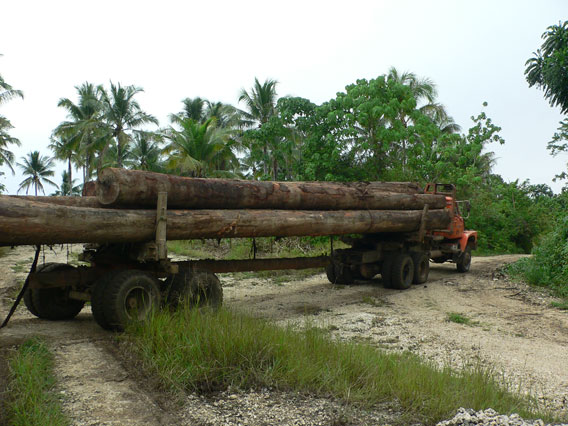
One of many “daily trucks” on countryside roads of Halmahera. Photo by: Dmitry Telnov, 2007.
Mongabay: What are the primary threats to biodiversity in the region?
Dmitry Telnov: Volumes have been written and perhaps tons of paper already spent on this issue. The global threats are more or less equal to those of any tropical region. Global warming, rushed deforestation, booming population growth, the introduction of numerous non-autochthonous species, poverty in rural areas, the availability of high-value resources (timber, oil, gas, gold, nickel, copper), overhunting, oil palm plantations, collecting for animal breeders (especially—birds, reptiles and amphibians and large insects), lack of rangers, and lack of real control instruments (for example, many internationally protected species are being legally sold under other—i.e. non-protected—common names to Europe and USA). In addition remoteness of the area, difficulty of controlling and monitoring the situation, local corruption, and unemployment are also important.
We can also speak of global-scale protection (saving large patches of forest from illegal logging or satellite control of deforestation) and local scale protection (saving individuals). But it is almost impossible to find a balance between these aspects of conservation and describe them properly.
Another (very important!) threat: for many conservation institutions and NGOs, nature conservation is only important on paper or in digital format to apply for more and more donations and support. Many of these organizations very occasionally go into the field for a real (hard, sweat, hot) work! And almost no effective mechanisms to control local branches of these NGOs are known to me!
Mongabay: Are conservation efforts strong in the region?
 Destroying primeval rainforest by road construction and selective logging, Halmahera. Photo: Dmitry Telnov, 2007. |
Dmitry Telnov: As the last large-scale unexplored region on Earth, Wallacea and New Guinea has attracted the attention of dozens of international and local conservation and academic institutions. Various small and large-scale projects are ongoing in the Indo-Australian transition zone, there are many famous scientists now involved in biological exploration, and many new, often sensational, discoveries are presented to the public almost annually.
I would like to avoid speaking about the main efforts of nature conservation on a large scale (REDD efforts, establishing new protected areas etc.). These have described enough and are the most visible part of the iceberg. What I can try to comment are the local aspects of this “battle of Evermore.”
Many things should be clarified to the broader public and must be accepted as they are: none of us has any legal right to prevent countries in the region from further development, from using their natural resources (in an appropriate manner of course) or the population of these countries from achieving better living standards. Any attempts to offer a “special way” of development for tropical countries will be smashed by appealing to our own example (Europe has almost no primeval nature left after a long period of industrialization).
As a traveler to the region, taking trips to areas considered “wild” or “unvisited,” I see some practical results of conservation activities. To my surprise I have met ranger patrols even in remote and tourist-free areas like Seram. We were informed by locals that they are only allowed to kill and consume marine turtles for cultural traditions (like marriage ceremonies) in a coastal Papuan village on Misool Island. Even in small Papuan villages, surrounded with rainforest, aborigines have noted they are not shooting Birds of Paradise and cockatoos anymore. I saw many wooden plates with text like “if not we than who? If not yet than when?” referring to protecting forests around towns and cities.
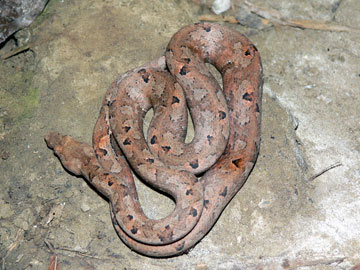 Candoia sp. (Moluccan boa) found under a stone on Manusela Ridge, Central Seram. Photo: Dmitry Telnov, 2009. |
On other hand, nobody has told locals that protecting sea turtles means prohibiting egg collection (eggs are freely available at each market near nesting turtles). Daggers made from cassowary bone and hornbill heads are sold freely on eBay and similar on-line stores as “historical or used” but mainly stem from newly killed animals and this trade is flowering! Dugong teeth (cigar’s covers) and “dry” Birds of Paradise are offered in Sorong airport (in front of WWF and CI offices). Dry plumage and bodies of Birds of Paradise were seen in a WWF demo-village in the Fakfak mountains of Indonesian New Guinea (a village which was built with WWF support to attract tourists and nature lovers to these pristine tropical mountains, but not a single tourist has been seen here in years but Birds of Paradise bodies are being offered daily to local travelers passing the village on the way from one town to another). Locals continue to hunt extremely endangered species like the grizzled tree kangaroo (Dendrolagus inustus), and long-beaked echidnas (Zaglossus brujni) have been observed smashed on montane road where there is very little traffic. And all the promises to bring thousands of wealthy tourists to far-flung villages without basic amenities remain completely unrealistic.
So what I currently see is increasing international pressure on local governments, increasing interest of local societies and government to preserve at least parts of their natural heritage, and the burgeoning of understanding the value of nature by local communities, even very remote ones. Only education will help to preserve this natural bonanza from disappearing. Well my book is one of these educational organs distributed globally!
UP NEXT
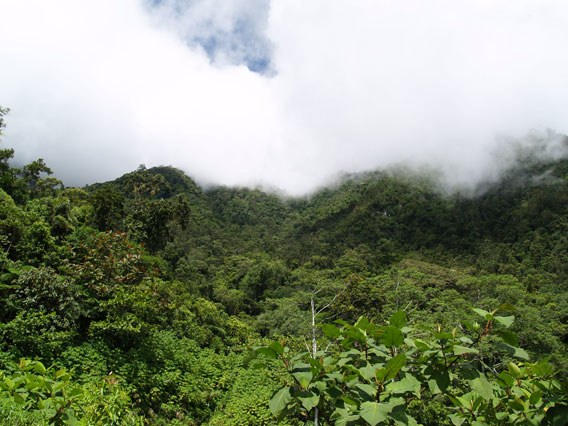
Midday fog coming down from Manusela Ridge, Central Seram. Photo: Dmitry Telnov, 2009.
Mongabay: This is the first volume of a planned series. Will future volumes look at different issues or be a continuation of the first?
Dmitry Telnov: The main concept will remain the same, but contents will vary depending on the aspects highlighted by future authors in forthcoming volumes.
Two things I find to be important are a) to involve more conservationists in the next volumes and b) to give a good chance for the perspective of scientists from the region (particularly from Indonesia, Papua New Guinea, Solomon Islands and Timor) to publish their studies in a respectful, peer-reviewed international publication. Investments both in nature conservation and developing local knowledge are priorities.
Mongabay: This is not a commercial book, so where has funding come from?
Dmitry Telnov: You are completely right about the non-commercial character of this book series. It could be described as very atypical in our totally pragmatic and profit-driven century, but all the costs (editing, layout, printing etc.) of Volume 1 were covered from my purse. I find it important to demonstrate to the public, and also to the scientific community that absence of funding, should not stop us from doing something important and necessary for nature conservation and scientific research. It may really sound strange to many of my colleagues that I am ready to do so many altruistic activities stimulated by a deep interest in and love of nature, and biological science, in particular.
Of course, I am selling the book. The main reason for this is to understand possible demand on this series and also to collect some financial “pillow” for the Volume 2. I am not offering my book through Amazon, eBay or other commercial structures but mostly distributing it myself, firstly through friends and colleagues.
Since Volume 1 has come out, several positive reviews and lot of warm comments have come in from around the world, which should be good enough to apply for partial funding for the volume 2!
I would like to use this moment to express my deep gratitude to all the contributors and other persons assisting in preparing and advertising this book!
For inquiries and ordering information:
Dmitry Telnov, PhD (anthicus@gmail.com)
Book’s website: http://leb.daba.lv/book
Order form in English (MS Word format): http://leb.daba.lv/book/order.doc
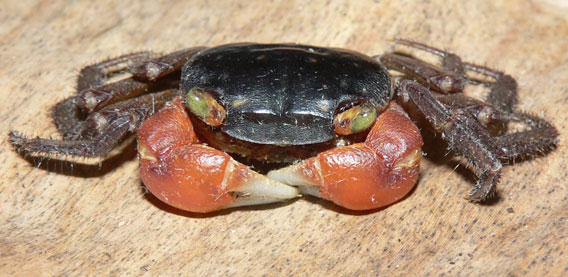
Red-clawed crab (Perisesarma bidens) is widely distributed in coastal areas of eastern Africa, southern and eastern Asia . Photo: Dmitry Telnov, 2010.
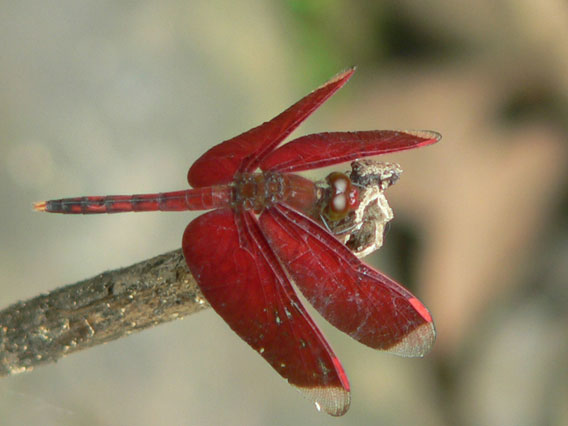
Neurothemis stigmatans is one among the most common Halmaheran dragonflies. Photo: Dmitry Telnov, 2007.

Pristine rainforest around Lake Kamakawalar, New Guinea. Photo: Dmitry Telnov, 2010.
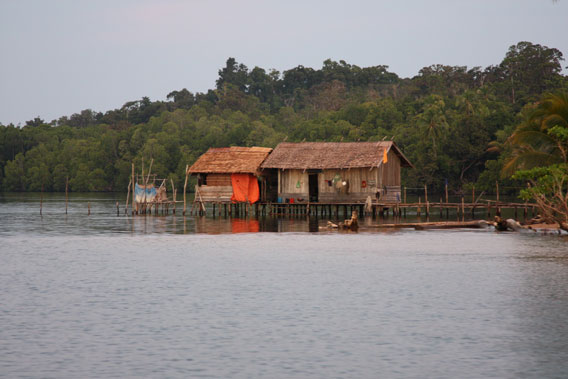
Traditional Papuan house on piles: southern coast of Misool island, Raja Ampat. Photo: Dmitry Telnov, 2009.
Related articles
New frog trumps miniscule fish for title of ‘world’s smallest vertebrate’
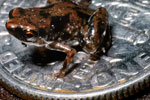
(01/12/2012) How small can you be and still have a spine? Scientists are continually surprised by the answer. Researchers have discovered a new species of frog in Papua New Guinea that is smaller than many insects and dwarfed by a dime. The frog trumps the previously known smallest vertebrate—a tiny fish—by nearly 1 millimeter.
Photos: bizarre shell of new snail baffles researchers
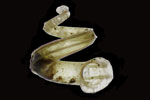
(11/10/2011) A new species of snail with a bizarre shell has surprised scientists. Discovered near massive waterfalls in pristine lowland rainforest in New Guinea, the tiny new species’ shell is shaped like a cornucopia, spirals flying freely instead of fused together like most shells. Latvian malacologist (one who study molluscs) Kristine Greke, who described the new species, named it Ditropopsis mirabilis, meaning miraculous or extraordinary. To date, scientists are uncertain why the super small snail—2 to 6 millimeters (0.07 to 0.23 inches)—would have evolved such a strange shell.
Beetle bonanza: 84 new species prove richness of Indo-Australian islands
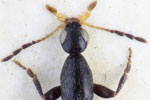
(11/08/2011) Re-examining beetle specimens from 19 museums has led to the discovery of 84 new beetle species in the Macratria genus. The new species span the islands of Indonesia, New Guinea, and the Solomon Islands, tripling the number of known Macratria beetles in the region. “Species of the genus Macratria are cosmopolitan, with the highest species diversity in the tropical rainforests. Only 28 species of this genus were previously known from the territory of the Indo-Australian transition,” Dr. Dmitry Telnov with the Entomological Society of Latvia, who discovered the new species, told mongabay.com.
Meet the just discovered ‘Komodo dragon’ of wasps
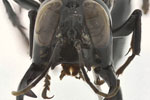
(08/28/2011) A new species of warrior wasp has been discovered on the Indonesian island of Sulawesi that is so large and, frankly, terrifying-looking that it has been dubbed the ‘Komodo dragon’ of the wasp family. Bizarrely, the male of the species has jaws that outstretch its limbs. “I don’t know how it can walk,” said the wasp’s discoverer, entomologist Lynn Kimsey of the University of California, Davis and director of the Bohart Museum of Entomology, in a press release. “Its jaws are so large that they wrap up either side of the head when closed.”
2-4 new shrew species discovered in Sulawesi
(06/28/2011) A research expedition has turned up two to four new species of shrew on the Indonesian island of Sulawesi, reports a conservation group working to protect their forest habitat.
Saving the maleo, a geothermal nesting bird, in Sulawesi
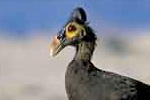
(12/06/2010) More species are threatened with extinction in Indonesia than any other country on Earth. If we are to save them, it will take more protected areas, radical shifts in deforestation, and better anti-poaching efforts, but in many cases it will also take species-specific conservation efforts that work directly with local people. The Alliance for Tompotika Conservation (AlTo) is a model organization for this method, founder Marcy Summers describes it as ‘very small, community-based, and efficient, with very low overhead.’ By focusing on the wonderfully bizarre maleo, a ground-dwelling bird on the island of Sulawesi, the organization has succeeded in protecting a vital nesting area while initiating a moratorium on the egg-harvesting, which once devastated the species.
Saving Sulawesi’s ‘pig-deer’, the babirusa
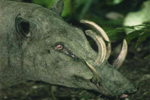
(12/06/2010) The babirusa of Sulawesi may be one of the world’s oddest looking—and acting—mammals. Literally meaning ‘pig-deer’ the babirusa, which includes four species, belongs to its own genus ‘Babyrousa’ in the pig family. Males are especially unique, sporting four tusks, two of which appear to come right out of the animal’s snout. To make it to the top of the babirusa hierarchy, males will combat each other in an activity dubbed ‘boxing’ where they will rear up on their hind legs and club at each other. Despite their many oddities, the babriusa were not formally studied until the late 1980s when Dr. Lynn Clayton spent four years in Sulawesi’s forest observing them.







